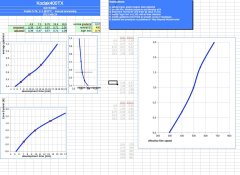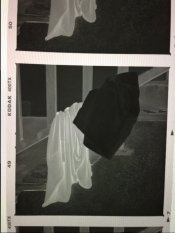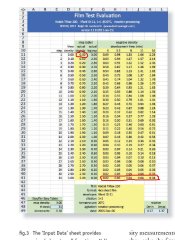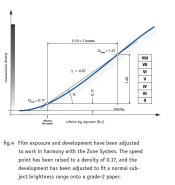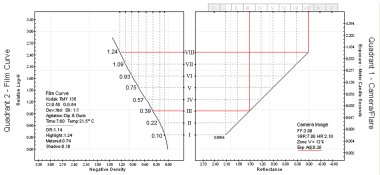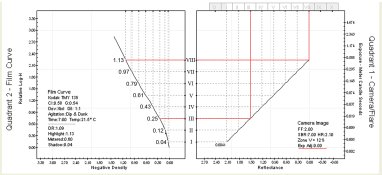Mark, this more a question of not taking things to the extreme. Where in Dunn?
I'll get to Dunn here in a second.
What I'm getting at is that; for a given film, given a certain amount of exposure, and processed in a given process, we get a given result.
The only real controls we have over the curve are " which film" and "how to process it". Once we decide on these the shape of the curve becomes a given.
It seems to me CPorter is describing not just the print range he expects to put on paper, but also, given the tight limits he suggests, where it will land on the paper. In fact the specific negative density range he picked, roughly .1 to 1.3, is only truly relevant if the target paper and enlarger exposure are givens. I'd even hazard a guess that CPorter may have normal/starting enlarger settings where he can straight proof his negatives on his normal paper. He may even consider negatives that don't fall normally onto the paper to be over or under-exposed.
Tight exposure and processing control of our films makes darkroom work easier by placing our subject matter where it will carry through nicely to the paper under "our normal conditions" with little or no adjustment.
This is where I come to Dunn's thoughts.
It appears to me that CPorter, like many others, uses the the general precepts described in section B "still monochrome photography" of chapter 1 in the 3rd edition; the darkest part of the subject matter defines the exposure settings and the difference between the darkest and lightest defines the processing.
My sensibilities and preferences are more as Dunn describes in section C "motion picture and colour work".
While the exact placement of subject matter from zone I and VIII in the scene appears very important to CPorter for his prints, that style of subject placement is normally a secondary consideration to me. The subject matter I want to land perfectly on my paper are mid to upper-tone subjects like faces. Chasing face exposure settings in the enlarger from frame to frame in my printing is truly frustrating for me. I do also expect a certain contrast rate for my shots but most times I don't care at which point specific subject matter ends up in zone III or zone II.
For any important shot I peg my mid-tones to the curve as carefully as CPorter does to his chosen peg.
I don't believe that CPorter and I disagree about the shape or sensitivity of a given film curve, we simply have differing expectations of what we expect to peg in our prints.








